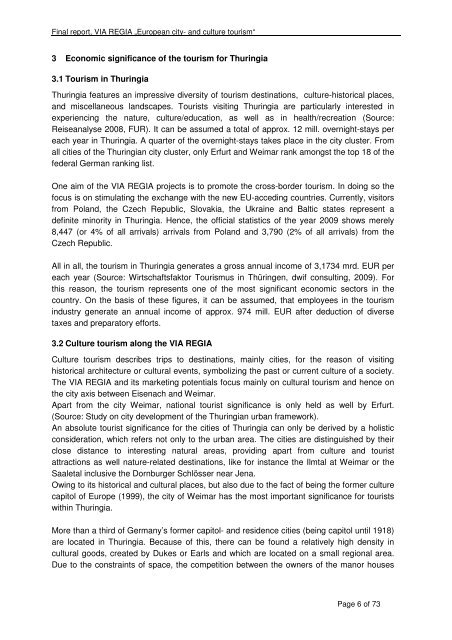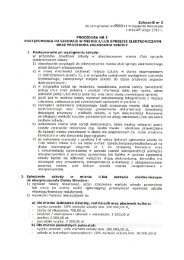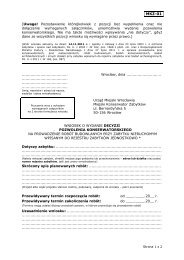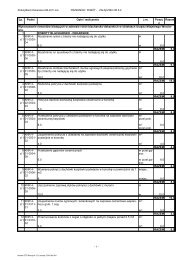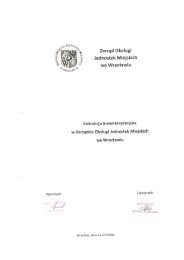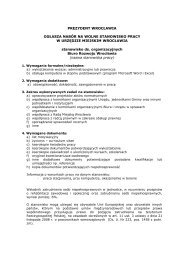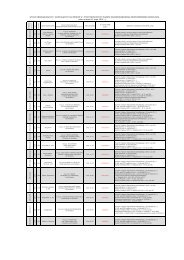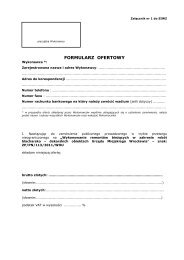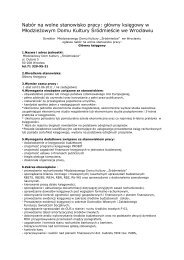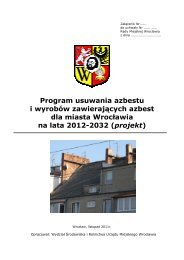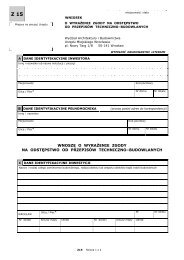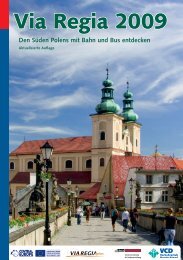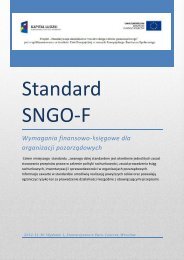Feasibility study: „European city and culture tourism – Thuringian ...
Feasibility study: „European city and culture tourism – Thuringian ...
Feasibility study: „European city and culture tourism – Thuringian ...
You also want an ePaper? Increase the reach of your titles
YUMPU automatically turns print PDFs into web optimized ePapers that Google loves.
Final report, VIA REGIA <strong>„European</strong> <strong>city</strong>- <strong>and</strong> <strong>culture</strong> <strong>tourism</strong>“<br />
3 Economic significance of the <strong>tourism</strong> for Thuringia<br />
3.1 Tourism in Thuringia<br />
Thuringia features an impressive diversity of <strong>tourism</strong> destinations, <strong>culture</strong>-historical places,<br />
<strong>and</strong> miscellaneous l<strong>and</strong>scapes. Tourists visiting Thuringia are particularly interested in<br />
experiencing the nature, <strong>culture</strong>/education, as well as in health/recreation (Source:<br />
Reiseanalyse 2008, FUR). It can be assumed a total of approx. 12 mill. overnight-stays per<br />
each year in Thuringia. A quarter of the overnight-stays takes place in the <strong>city</strong> cluster. From<br />
all cities of the <strong>Thuringian</strong> <strong>city</strong> cluster, only Erfurt <strong>and</strong> Weimar rank amongst the top 18 of the<br />
federal German ranking list.<br />
One aim of the VIA REGIA projects is to promote the cross-border <strong>tourism</strong>. In doing so the<br />
focus is on stimulating the exchange with the new EU-acceding countries. Currently, visitors<br />
from Pol<strong>and</strong>, the Czech Republic, Slovakia, the Ukraine <strong>and</strong> Baltic states represent a<br />
definite minority in Thuringia. Hence, the official statistics of the year 2009 shows merely<br />
8,447 (or 4% of all arrivals) arrivals from Pol<strong>and</strong> <strong>and</strong> 3,790 (2% of all arrivals) from the<br />
Czech Republic.<br />
All in all, the <strong>tourism</strong> in Thuringia generates a gross annual income of 3,1734 mrd. EUR per<br />
each year (Source: Wirtschaftsfaktor Tourismus in Thüringen, dwif consulting, 2009). For<br />
this reason, the <strong>tourism</strong> represents one of the most significant economic sectors in the<br />
country. On the basis of these figures, it can be assumed, that employees in the <strong>tourism</strong><br />
industry generate an annual income of approx. 974 mill. EUR after deduction of diverse<br />
taxes <strong>and</strong> preparatory efforts.<br />
3.2 Culture <strong>tourism</strong> along the VIA REGIA<br />
Culture <strong>tourism</strong> describes trips to destinations, mainly cities, for the reason of visiting<br />
historical architecture or cultural events, symbolizing the past or current <strong>culture</strong> of a society.<br />
The VIA REGIA <strong>and</strong> its marketing potentials focus mainly on cultural <strong>tourism</strong> <strong>and</strong> hence on<br />
the <strong>city</strong> axis between Eisenach <strong>and</strong> Weimar.<br />
Apart from the <strong>city</strong> Weimar, national tourist significance is only held as well by Erfurt.<br />
(Source: Study on <strong>city</strong> development of the <strong>Thuringian</strong> urban framework).<br />
An absolute tourist significance for the cities of Thuringia can only be derived by a holistic<br />
consideration, which refers not only to the urban area. The cities are distinguished by their<br />
close distance to interesting natural areas, providing apart from <strong>culture</strong> <strong>and</strong> tourist<br />
attractions as well nature-related destinations, like for instance the Ilmtal at Weimar or the<br />
Saaletal inclusive the Dornburger Schlösser near Jena.<br />
Owing to its historical <strong>and</strong> cultural places, but also due to the fact of being the former <strong>culture</strong><br />
capitol of Europe (1999), the <strong>city</strong> of Weimar has the most important significance for tourists<br />
within Thuringia.<br />
More than a third of Germany’s former capitol- <strong>and</strong> residence cities (being capitol until 1918)<br />
are located in Thuringia. Because of this, there can be found a relatively high density in<br />
cultural goods, created by Dukes or Earls <strong>and</strong> which are located on a small regional area.<br />
Due to the constraints of space, the competition between the owners of the manor houses<br />
Page 6 of 73


